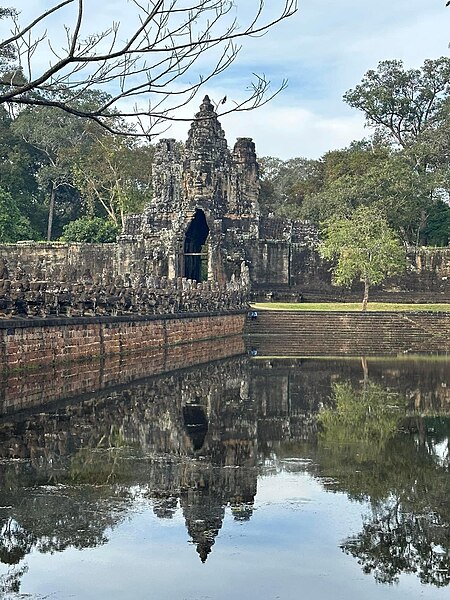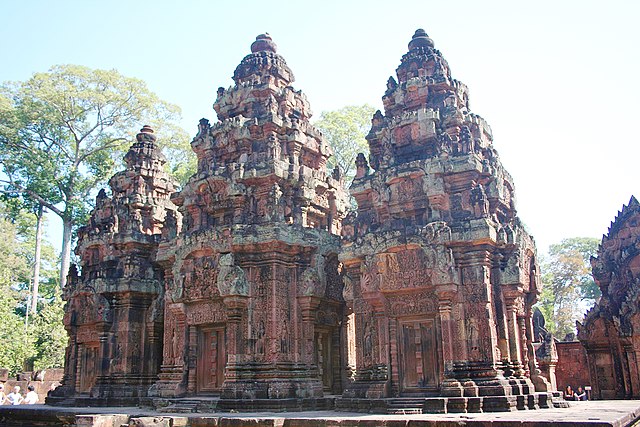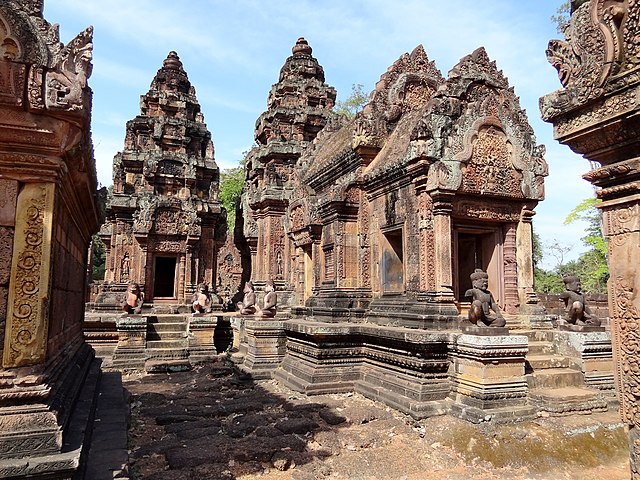Angkor Thom, alternatively Nokor Thom, located in present-day Cambodia, was the last and most enduring capital city of the Khmer Empire. It was established in the late twelfth century by King Jayavarman VII. It covers an area of 9 km², within which are located several monuments from earlier eras as well as those established by Jayavarman and his successors. At the centre of the city is Jayavarman's state temple, the Bayon, with the other major sites clustered around the Victory Square immediately to the north. The site is one of the major tourist attractions of Southeast Asia.
South gate of Angkor Thom along with a bridge of statues of gods and demons. Two rows of figures each carry the body of seven-headed naga.
Bayon
Faces on Prasat Bayon
Baphuon
The Khmer Empire was a Hindu-Buddhist empire in Southeast Asia, centered around hydraulic cities in what is now northern Cambodia. Known as Kambuja by its inhabitants, it grew out of the former civilisation of Chenla and lasted from 802 to 1431. Historians call this period of Cambodian history the Angkor period, after the empire's most well-known capital, Angkor. The Khmer Empire ruled or vassalised most of mainland Southeast Asia and stretched as far north as southern China. At its peak, the Empire was larger than the Byzantine Empire, which existed around the same time.
Temple of Banteay Srei, built 967 A.D.
Bakong, one of the earliest temple mountains in Khmer architecture
Banteay Srei, a 10th-century Cambodian temple dedicated to the Hindu god Shiva
Ta Keo, a state temple built around the year 1000








